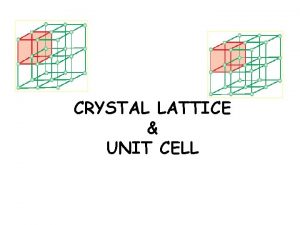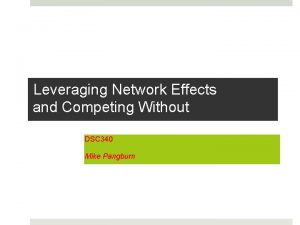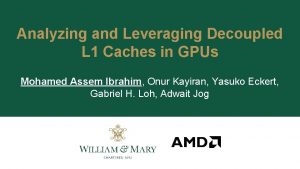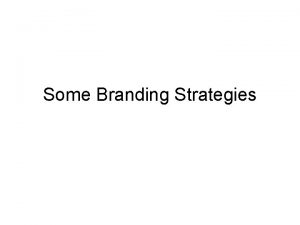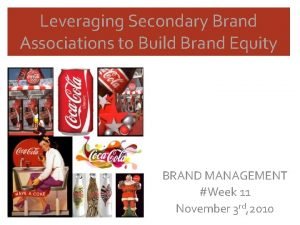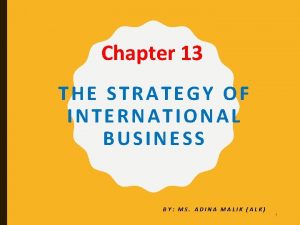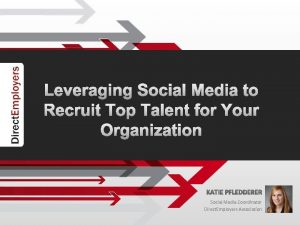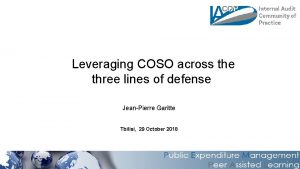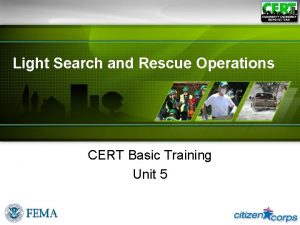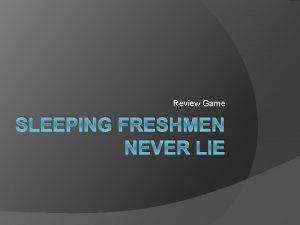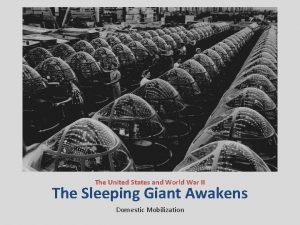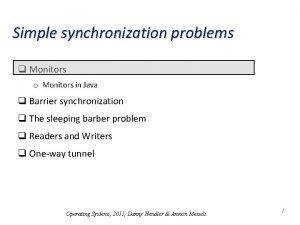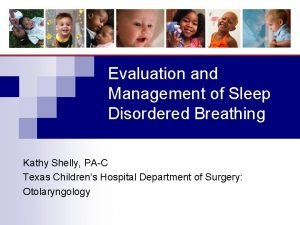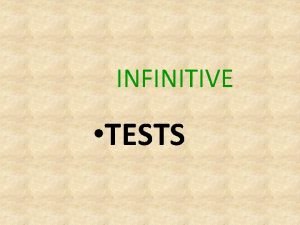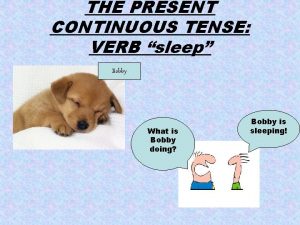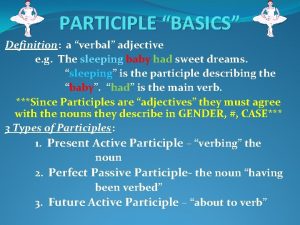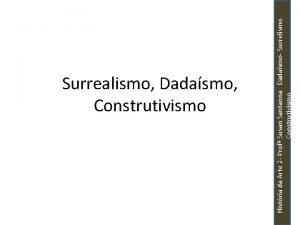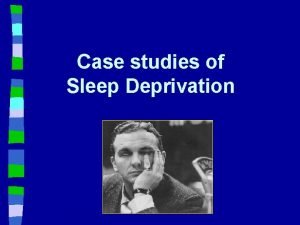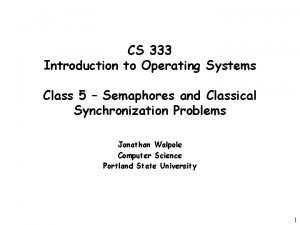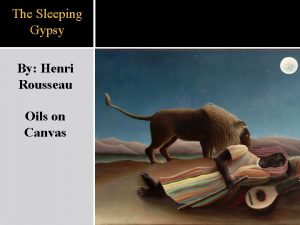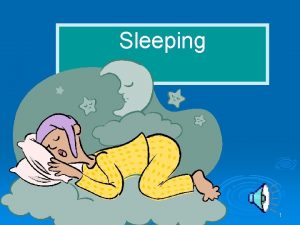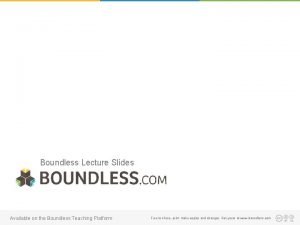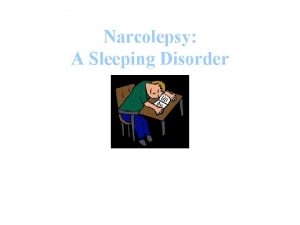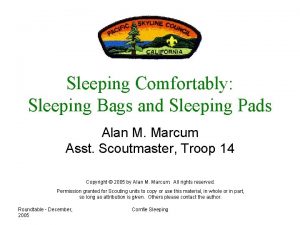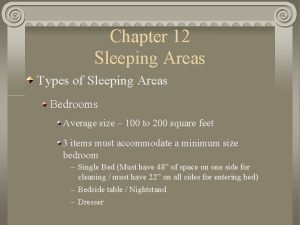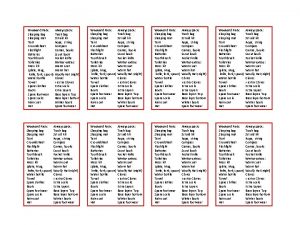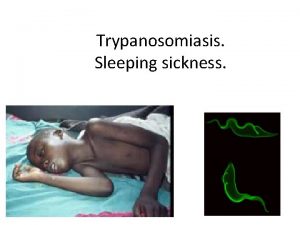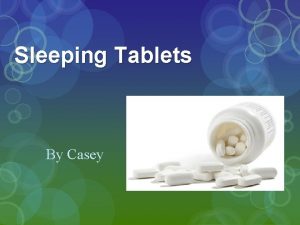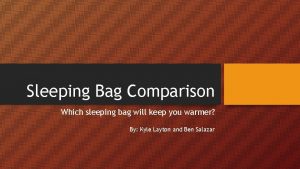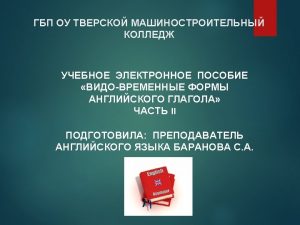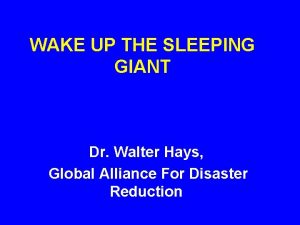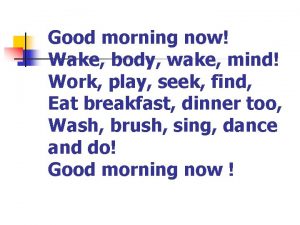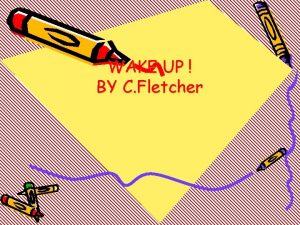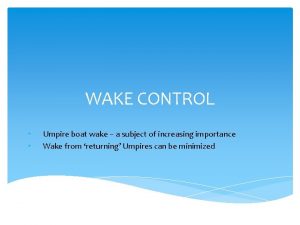Leveraging an Erroneous Treatment Did We Wake Sleeping















































- Slides: 47

Leveraging an Erroneous Treatment Did We Wake Sleeping Dogs, Reactivate Engagement, or Do Nothing At All? Predictive Analytics World San Francisco April 4 th, 2016 Ming Ng, Linked. In Jim Porzak, DS 4 CI. org V 1. 1 is as presented but with typo’s corrected. 11/25/2020 1

Outline 1. Uplift modeling background, we skip this! – See talks earlier today and Eric Siegel’s book – Chapter 7 2. Lynda. com – What they do. What happened. 3. Analysis – Data, Engagement, & Uplift 4. Conclusions Appendix has references, tech deep dives, and links to learn more. 11/25/2020 40/ 2

Lynda. com 1. Lynda founded in 1995, bought by Linkedin in 2015. 2. A subscription based e-learning company. 3. Access to 8000+ online courses. 4. Members start with a free trial. 5. At end of the trial, customers cancel or be billed $24. 99 or $34. 99 monthly for a subscription. 6. Members are automatically billed unless they cancel. 7. Cancelled members can reactivated their account. 11/25/2020 39/ 3

Lynda. com Hompage 11/25/2020 38/ 4

Trial Signup Page 11/25/2020 37/ 5

Videos on Lynda. com 11/25/2020 36/ 6

Typical Customer Behavior Cancel request, this will stop auto next renewal Paid Subscription Start 1 st auto renewal User Reactivation 2 nd auto renewal Access end, subscription not renewed 11/25/2020 35/ 7

Site Error ● When user signs up, they can opt-in to receive a payment receipt via email. The default is to opt-out. Very few opt-in. ● A site error caused users that are opted-out to get an email receipt thanking them for their payment. This error lasted for 8 days in mid August 2015. “Thanks for your payment” email sent. ? 11/25/2020 34/ 8

The erroneous “Thanks” Email In the Gmail inbox, it looks like this: 11/25/2020 33/ 9

Which raises the business question: What did the erroneous “Thanks” email do? ● Did We Wake Sleeping Dogs? – ● Reactivate Engagement? – ● Cause a cancel which would not have happened. Cause an increase in video viewing. Do Nothing At All? 11/25/2020 32/ 10

The Analysis Workflow 1. Build our “Sleeping Dogs” data set 2. Exploratory data analysis & data profiling 3. Did erroneous “Thanks” email increase engagement? 1. Look for increase in user video viewing activity. 4. Did they cause cancels? 1. Use information value (IV), weight of evidence (WOE), and variable clustering to screen & select predictors. 2. Build the uplift model. 5. Evaluate models & report results. 11/25/2020 31/ 11

Building Data Sets – 1 of 4 We need two data sets for the two questions: 1. Did erroneous “Thanks” email increase engagement? ● 2. Can we find an uplift churn effect? ● ● ● 11/25/2020 For non-cancelers, get video engagement metrics for 30 days before and 30 days after email. Data about subscriber, subscription, video metrics, and if they canceled. Include metrics up to time of email only – no future looking metrics! Do 70/30 split into training and validation sub-sets 30/ 12

Building Data Sets – 2 of 4 Secret weapon: Redshift subscriber data mart. Design: • Models subscriber behavior • Wide tables – easy to understand • High data quality • Very fast to access Three levels of abstraction: 1. “Everything” about our subscribers. 2. “Everything” about their subscription chain(s). 3. “Everything” about their content usage stints. To get details, just Google: “site: ds 4 ci. org structuring data” 11/25/2020 29/ 13

Building Data Sets – 3 of 4 For engagement question: ● Select monthly subscribers with a renewal in August, 2015 who did renew. ● Record if they got the erroneous “Thanks” email. ● Gather metrics over 30 days prior & 30 days after: • • Days since last stint; until next stint Number of days active in period Number of stints in period Total minutes in period 11/25/2020 • • Top primary topic in period % stints w/ top primary topic Number of topics in period % stints w/ top 3 primary topics 28/ 14

Building Data Sets – 4 of 4 For churn and uplift questions: ● ● ● Select monthly subscribers with renewal in August 2015. Limit metrics to before renewal date! Random split 70/30. Record if they got “Thanks” email & if they canceled Subscriber Metrics: cohort quarter, initial product & promo & channel, tenure(days), # days a subscriber, % subscribed, local time UTC offset. Subscription Metrics: current product & promo, # chains, # renewals 1 st chain, RTD (revenue to date), RTD 1 st chain. Usage Metrics: days since last stint, days active, % active, # stints, #stints/active day, total minutes, # minutes per active day, # top libraries, # topics, # top software, # top levels, # courses, # video opens, # completed, % stints in top primary topic, # topics, % top 3 topics, 30 day prior metrics (see prior slide). 11/25/2020 27/ 15

Full data set down sampled to 180 k Monthly Subscribers with a renewal date in Aug, 2015 Products: 1001 is “Standard Monthly” subscription. 1008 is “Premium” with a price point about 40% above the standard subscription. 11/25/2020 26/ 16

Engagement Increase? – 1 of 4 Where we compare video consumption metrics in the 30 days after renewal with the same metric 30 days prior to renewal. Issue is a large number of subscribers have no usage stints in one or both periods. Solution: Define “before to after” acceleration levels as a factor these levels: Acceleration Level None at All Before After Before is NA After is NA Yes All Before After / Before Ratio Yes Big Down < 0. 25 Down >= 0. 25 & < 0. 75 Same >= 0. 75 & < 1. 3333 Up >= 1. 3333 & < 4 Big Up All After 11/25/2020 > =4 Yes 25/ 17

Engagement Increase? – 2 of 4 The other Before/After metrics tell the same story. 11/25/2020 24/ 18

Engagement Increase? – 3 of 4 Check the increase in proportion of “All After” counts to total counts for Total Minutes > prop. test(All_After, N) 2 -sample test for equality of proportions with continuity correction data: All_After out of N X-squared = 95. 4, df = 1, p-value < 2. 2 e-16 alternative hypothesis: two. sided 95 percent confidence interval: 0. 01408414 0. 02135104 sample estimates: In Error Normal 0. 1450992 0. 1273817 A 1. 77 % point increase in subscribers who were inactive before the email and watched videos after the email. 11/25/2020 23/ 19

Engagement Increase? – 4 of 4 Business implications ● ● Even this “frank” reminder that one is subscribed to Lynda. com can reactivate some inactive subscribers! Opportunity to test in future: 1. Positive engagement messaging to inactive subscribers 2. Uplift modeling to sort out persuadable inactive subscribers 11/25/2020 22/ 20

Moving on to Churn Data Set Three steps in this initial analysis: 1. Look at information value (IV) and weight of evidence (WOE) for binary classification problem. Initial paring down of candidate predictors. 2. Look at net information value (NIV) and net weight of evidence (NWOE) for uplift problem. Exploratory look at reasonableness of uplift effort. 3. Do variable clustering and selection based on NIV. To get final set of candidate predictors for uplift. Basically, we are following the example in Kim Larsen’s Information Package Vignette 11/25/2020 21/ 21

Churn – Info Value & WOE – 1 of 3 Initially we look at the binary classifier problem – did subscribers cancel? Using Kim Larsen’s information package in R for IV, WOE, and Variable Selection. 11/25/2020 20/ 22

Churn – Info Value & WOE – 2 of 3 Weight of Evidence for top ranked predictor Subscribers in 1 st or 2 nd month much more likely to churn Bins ~ equal size, when values allow ? 11/25/2020 19/ 23

Churn – Info Value & WOE – 3 of 3 WOE for Predictors ranked 2 nd through 5 th 11/25/2020 18/ 24

Uplift – Net Info Value & NWOE – 1 of 3 Now we look at influence of the treatment – “Thanks” email. 11/25/2020 17/ 25

Uplift – Net Info Value & NWOE – 2 of 3 Net WOE for top ranked predictor 11/25/2020 16/ 26

Uplift – Net Info Value & NWOE – 3 of 3 Net WOE for 2 nd through 5 th ranked predictors 11/25/2020 15/ 27

Net IV Variable Clustering – 1 of 3 From each cluster, pick variable with highest Net IV 11/25/2020 14/ 28

Net IV Variable Clustering – 2 of 3 From each cluster, pick variable with highest Net IV. Here are first six clusters: 11/25/2020 13/ 29

Net IV Variable Clustering – 3 of 3 The final 17 predictors to be passed to uplift modeling. 11/25/2020 12/ 30

Now we are ready for uplift Analysis steps: 1. Check train/validate split did not introduce bias 2. Run both uplift. RF & ccif methods – pick best for deep dive 3. Get NIV via uplift. Compare with what we got from Information. 4. Plot relative importance of candidate predictors. 5. Profile resulting model: Predicted uplift & predictors 6. Business implications. What did we learn? Next steps? Basically, following Chapters 10 & 11 in Leo Guelman’s Ph. D Thesis: Optimal personalized treatment learning models with insurance applications. 11/25/2020 11/ 31

Uplift Modeling – 1 of 8 First check that training & validation set splits ~ same 11/25/2020 10/ 32

Uplift Modeling – 2 of 8 The two modeling methods we looked at. Uplift Random Forest (aka uplift. RF) Used This ● A variation of the classic Leo Breiman method. ● Well known ● Pretty fast ● Issues – see ccif Causal Conditional Inference Forests (aka ccif) ● Fixes issues with uplift. RF 1. Overfitting 2. Selection bias toward covariates with many possible splits ● Slow (but Leo working on update) ● Better lift & better story We are using the R package “uplift” by Leo Guelman. See Appendix for pseudo code of each method & references. 11/25/2020 9/ 33

Uplift Modeling – 3 of 8 Qini Curves & Coefficient for Each Method 11/25/2020 8/ 34

Uplift Modeling – 4 of 8 Net IV from information Net IV from uplift 1 2 2 1 4 7 8 1 1 3 11 7 7 4 11/25/2020 7/ 35

Uplift Modeling – 5 of 8 ccif Relative Importance (in separating positive & negative outcomes) 11/25/2020 6/ 36

Uplift Modeling – 6 of 8 ccif Predicted Uplift & Top Predictor – Subscriber Tenure (days) Grouped in vigintiles by predicted uplift ranking. Predicted Uplift Subscriber Tenure (days) 170 -110 days 11/25/2020 5/ 37

Uplift Modeling – 7 of 8 Four interesting predictors: A) # Videos Completed, B) # Stints / Active Day, C) # Top Libraries, D) % Stints w/ Top Primary Topic A B C D 11/25/2020 4/ 38

Uplift Modeling – 8 of 8 Groups with positive uplift 6% more likely to churn when reminded they are paying Lynda. com 11/25/2020 3/ 39

Next Steps Experiments to: 1. Determine best uplift groups to increase engagement of inactive subscribers. 2. Try a positive “You are a member” message rather than a negative “Thanks for you payment” message. Data deep dive: 1. Figure out who are the Group 17 -20 subscribers (those with negative uplift) who’s first subscription was 110 – 170 days before August, 2015 billing. 11/25/2020 2/ 40

Remember the business question? What did the erroneous “Thanks” email do? ● Did We Wake Sleeping Dogs? – ● ● Cause a cancel which would not have happened. Reactivate Engagement? – Cause an increase in video viewing. Do Nothing At All? Subscribers, being people, responded differently to the “Thanks” email. Some negatively, some positively and, for most, it had no effect. Isn’t marketing fun! 11/25/2020 32/ 41

What We Covered ● Lynda. com – What they do & what happened ● Building data sets ● Apply Information package for IV & WOE ● Variable selection for uplift model ● Apply uplift package ● Business conclusions Contacts: Ming. Ng. Linked. In. com Jim@DS 4 CI. org 11/25/2020 Questions? Comments? Now is the time! 1/ 42

APPENDIX 1. Uplift algorithm pseudo code for uplift. RF & ccit. 2. R environment used in this analysis. 3. Learning More – Where to Start? 11/25/2020 43

uplift. RF Uplift Pseudocode Where, B is # trees to grow, KL is Kulback-Leiber distance From: Guelman, L. , Guillen, M. and Perez-Marin, A. M. (2014) “Optimal personalized treatment rules for marketing interventions: A review of methods, a new proposal, and an insurance case study. ”, UB Riskcenter Working Papers Series 2014 -06 11/25/2020 44

ccif Uplift Pseudocode From: Guelman, L. , Guillen, M. and Perez-Marin, A. M. (2014) “Optimal personalized treatment rules for marketing interventions: A review of methods, a new proposal, and an insurance case study. ”, UB Riskcenter Working Papers Series 2014 -06 11/25/2020 45

R Environment Used ● ● ● ● ● R download https: //cran. rstudio. com/index. html RStudio download https: //www. rstudio. com/ R Packages (https: //cran. rstudio. com/web/packages/) : Hadley Wickham: ggplot 2, dplyr, tidyr, readr, stringr Yihui Xie: knitr David Meyer, et al: vcd Michael Friendly: vcd. Extra Kim Larsen: Information Marie Chavent, et al: Clust. Of. Var Leo Guelman: uplift 11/25/2020 46

Learning More – Where to Start? ● Jim’s Archives www. ds 4 ci. org/archives – ● Uplift Modeling – Eric Siegel, Predictive Analytics: The Power to Predict Who Will Click, Buy, Lie, or Die – Revised and Updated. (2016) Chapter 7. – PAW SF 2016 Sessions: – – ● ● Eric Sigel, Case Study: U. S. Bank; Uplift Modeling: Optimize for Influence and Persuade by the Numbers ● Patrick Surry, Case Study: Telenor; Applying Next Generation Uplift Modeling to Optimize Customer Retention Programs Leo Guelman, et al (the author of the R package uplift): ● Optimal personalized treatment rules for marketing interventions: A review of methods, a new proposal, and an insurance case study ● Optimal personalized treatment learning models with insurance applications. (Ph. D Thesis) Michal Soltys et al, Ensemble methods for uplift modeling Information Value & Weight of Evidence – ● Structuring Data for Customer Insights for more about the Redshift CI datamart. Kim Larsen – stichfix blog post or Information package vignette Visualizing categorical data – Vignettes in vcd and vcdextra packages – Discrete Data Analysis with R, Friendly & Meyer, CRC Press (2015) 11/25/2020 47
 Tetrahedral holes in fcc
Tetrahedral holes in fcc Are rigid attitudes based on erroneous beliefs.
Are rigid attitudes based on erroneous beliefs. Erroneous violative impossible prescription
Erroneous violative impossible prescription Leveraging network effects
Leveraging network effects Primary and secondary brand associations
Primary and secondary brand associations Analyzing and leveraging decoupled l1 caches in gpus
Analyzing and leveraging decoupled l1 caches in gpus Brand leveraging strategies
Brand leveraging strategies Types of secondary brand associations
Types of secondary brand associations Louisiana leveraging educational assistance partnership
Louisiana leveraging educational assistance partnership Chapter 13 the strategy of international business
Chapter 13 the strategy of international business Leveraging social media for talent acquisition
Leveraging social media for talent acquisition Three lines of defense coso
Three lines of defense coso Leveraging threat intelligence
Leveraging threat intelligence Cert size up steps
Cert size up steps Secondary brand elements
Secondary brand elements 3 lines of defense
3 lines of defense Leveraging subsidiary skills
Leveraging subsidiary skills Sleeping barber problem solution using semaphore in c
Sleeping barber problem solution using semaphore in c Sleeping freshmen never lie answers
Sleeping freshmen never lie answers Sleeping giant ww2
Sleeping giant ww2 Sleeping barber problem using monitors
Sleeping barber problem using monitors Nap
Nap Promastigote
Promastigote Thalidomide sleeping pill
Thalidomide sleeping pill Different sleeping positions
Different sleeping positions Jane went on sleeping for another two hours
Jane went on sleeping for another two hours We fat all creatures
We fat all creatures Benefits supervisor sleeping naked man with rat
Benefits supervisor sleeping naked man with rat Salvador felipe jacinto dalí domènech
Salvador felipe jacinto dalí domènech Sleeping beauty retold by brent lansing genre
Sleeping beauty retold by brent lansing genre What is the present tense of sleep
What is the present tense of sleep Perfect passive participle latin
Perfect passive participle latin Gabo
Gabo Sibilant sounds
Sibilant sounds Alliteration of fleet
Alliteration of fleet Trypanosomiasis
Trypanosomiasis The world is too much with us stanza wise explanation
The world is too much with us stanza wise explanation Peter tripp sleep
Peter tripp sleep Musical alliteration
Musical alliteration Sleeping barber problem in os
Sleeping barber problem in os Goldilocks in the forest
Goldilocks in the forest Hoa rang
Hoa rang Sleeping in my orchard a serpent stung me
Sleeping in my orchard a serpent stung me Japanese encephalitis vaccination sydenham
Japanese encephalitis vaccination sydenham Henri rousseau sleeping gypsy analysis
Henri rousseau sleeping gypsy analysis Sleeping pad target
Sleeping pad target Image of a child sleeping
Image of a child sleeping Deuce bigalow sleeping disorder
Deuce bigalow sleeping disorder
